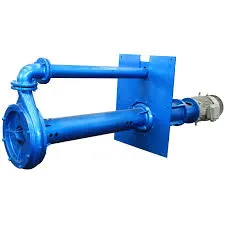English
- Afrikaans
- Albanian
- Amharic
- Arabic
- Armenian
- Azerbaijani
- Basque
- Belarusian
- Bengali
- Bosnian
- Bulgarian
- Catalan
- Cebuano
- Corsican
- Croatian
- Czech
- Danish
- Dutch
- English
- Esperanto
- Estonian
- Finnish
- French
- Frisian
- Galician
- Georgian
- German
- Greek
- Gujarati
- Haitian Creole
- hausa
- hawaiian
- Hebrew
- Hindi
- Miao
- Hungarian
- Icelandic
- igbo
- Indonesian
- irish
- Italian
- Japanese
- Javanese
- Kannada
- kazakh
- Khmer
- Rwandese
- Korean
- Kurdish
- Kyrgyz
- Lao
- Latin
- Latvian
- Lithuanian
- Luxembourgish
- Macedonian
- Malgashi
- Malay
- Malayalam
- Maltese
- Maori
- Marathi
- Mongolian
- Myanmar
- Nepali
- Norwegian
- Norwegian
- Occitan
- Pashto
- Persian
- Polish
- Portuguese
- Punjabi
- Romanian
- Russian
- Samoan
- Scottish Gaelic
- Serbian
- Sesotho
- Shona
- Sindhi
- Sinhala
- Slovak
- Slovenian
- Somali
- Spanish
- Sundanese
- Swahili
- Swedish
- Tagalog
- Tajik
- Tamil
- Tatar
- Telugu
- Thai
- Turkish
- Turkmen
- Ukrainian
- Urdu
- Uighur
- Uzbek
- Vietnamese
- Welsh
- Bantu
- Yiddish
- Yoruba
- Zulu
Telephone: +86 13120555503
Email: frank@cypump.com
Jul . 31, 2024 22:36 Back to list
Understanding and Selecting the Right Pump for Efficient Slurry Dewatering Applications
Understanding Slurry Dewatering Pumps Essential Tools for Efficient Material Handling
Slurry dewatering pumps are vital components in industries that deal with the processing of materials that contain a significant amount of water and solid particles, such as mining, construction, wastewater treatment, and various manufacturing operations. These pumps are specifically designed to handle thick, viscous mixtures—commonly known as slurries—comprising a combination of liquids and solids, making them critical for efficient material handling and waste management.
The Importance of Slurry Dewatering
The process of dewatering involves the removal of excess water from a slurry, which decreases its volume and facilitates easier transportation and disposal. This process not only helps in achieving cost-effective waste management but also minimizes the environmental impact associated with excess water discharge. Dewatering can enhance the recovery of valuable materials, ensure compliance with environmental regulations, and improve the overall efficiency of the process in industries that generate large volumes of slurry.
How Slurry Dewatering Pumps Work
Slurry dewatering pumps are engineered to withstand the unique challenges posed by abrasive and corrosive materials. They are equipped with specialized impellers and casings that are resistant to wear and tear, ensuring durability over time. The pumps function by creating a pressure differential that facilitates the movement of slurry from one point to another.
The process typically starts with the collection of slurry in a holding tank, from where the pump draws the mixture. As the pump operates, it separates the solids from the liquid through a combination of centrifugal force and gravity. The solid phase is then directed toward a dewatering apparatus, such as a filter press or a centrifuge, where further separation occurs, allowing for the extraction of water and the formation of a solid cake that can be readily disposed of or reused.
Key Features of Slurry Dewatering Pumps
slurry dewatering pump

2. Capacity and Efficiency Slurry dewatering pumps come in various sizes and capacities to meet the demands of different operations, enabling efficient handling of both small and large volumes of slurry.
3. Versatility These pumps can manage a wide range of slurry types, including those from sand and gravel operations, mineral processing, and even municipal wastewater treatment.
4. Ease of Maintenance Manufacturers design slurry dewatering pumps with user-friendly maintenance features. Regular upkeep is crucial to ensure consistent performance and prevent unexpected downtime.
5. Energy Efficiency Modern slurry pumps are engineered to be energy-efficient, which not only reduces operational costs but also contributes to sustainability goals within industries.
Conclusion
In conclusion, slurry dewatering pumps are indispensable in a multitude of industries due to their ability to effectively manage and separate solids from liquids in challenging environments. By optimizing the dewatering process, these pumps enhance material recovery, facilitate compliance with environmental standards, and contribute to the overall efficiency of operations. Investing in high-quality slurry dewatering pumps can lead to significant long-term benefits, ensuring that industries continue to operate smoothly and sustainably amid increasing demands and environmental considerations. As technology advances, the capabilities of these pumps will likely evolve, further enhancing their role in modern industrial processes.
-
Custom Drilling Mud and Slurry Pump Supplier - High Efficiency, Tailored Solutions
NewsJun.10,2025
-
Supply Vertical Submersible Sewage Pump High-Efficiency WQ/QW Pumps Supplier
NewsJun.10,2025
-
Premium Sewage Ejection System & Pumps Efficient Waste Removal
NewsJun.09,2025
-
Premium Wholesale Slurry Pump Impellers Durable & Efficient Slurry Handling
NewsJun.09,2025
-
Top Sewage Pump Companies Durable Industrial Solutions for Efficiency
NewsJun.09,2025
-
Heavy Duty Slurry Pumps - OEM High Performance & Bulk Wholesale
NewsJun.09,2025










